Azerbaijan’s Location And Geography
Azerbaijan is located in the South Caucasus region of Eurasia. Its location is strategic as it sits at the crossroads of Europe and Asia, sharing borders with Iran to the south, Russia to the north, Georgia to the northwest, and Armenia to the west. The Caspian Sea makes up Azerbaijan’s eastern border. The country covers an area of 86,600 square kilometers.
The geography of Azerbaijan is diverse, featuring snow-capped mountains, vast valleys, and arid deserts. The Caucasus Mountains run through the northern part of the country, with the highest peak being Bazarduzu at 4,466 meters. The Gobustan Reserve, located southwest of the capital city of Baku, is a UNESCO World Heritage Site that features over 6,000 petroglyphs, or rock carvings, that date back to the Stone Age.
| Landforms | Description |
|---|---|
| The Caspian Sea | The world’s largest inland body of water. |
| Absheron Peninsula | A flat, arid region that sits on the Caspian Sea, known for its oil refineries and petrochemical plants. |
| Baku Strait | A narrow sea passage that separates the Absheron Peninsula and the Apsheron Peninsula. |
- The Aras River forms Azerbaijan’s border with Iran.
- The Kura River, which flows through Georgia and Azerbaijan, is the country’s major river and provides irrigation for agriculture.
- The Khachmaz and Guba regions in the northern part of the country are popular tourist destinations due to their scenic landscapes and proximity to the Caucasus Mountains.
Overall, Azerbaijan’s location and geography contribute to its rich cultural and natural heritage, making it a unique and fascinating destination for travelers.
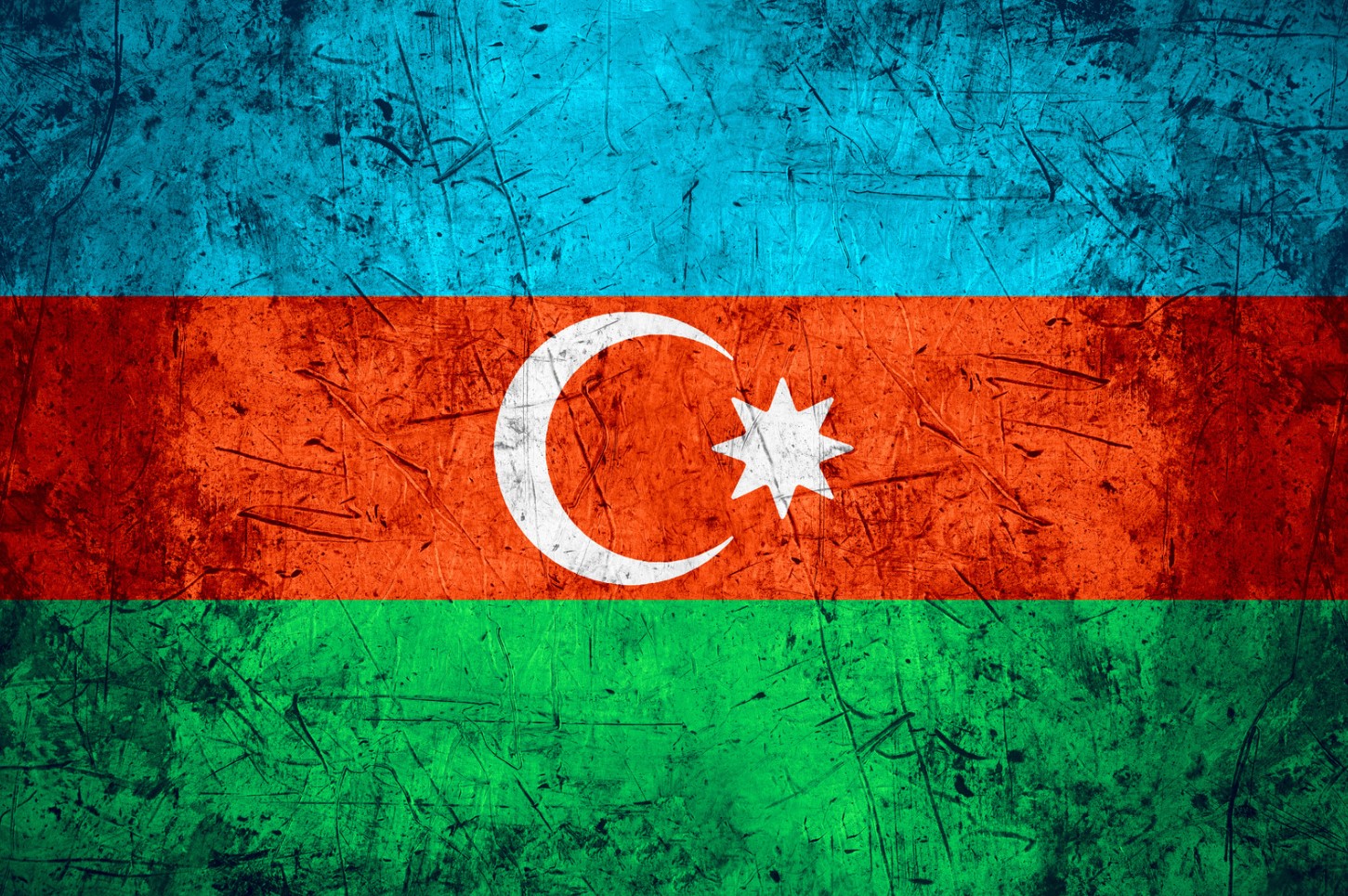
Azerbaijani Flag And State Symbols
Azerbaijan is a proud nation with an extensive history, and as such, the country has a number of symbols that represent their identity. These symbols range from simple things like the flag to more complex icons like the coat of arms, national anthem, and currency. Understanding these symbols can provide valuable insight into Azerbaijani culture and make your visit to this fascinating country even more rewarding.
The Azerbaijani flag is one of the most recognizable symbols of the country. The flag consists of three horizontal stripes with a white crescent and an eight-pointed star centered on the red stripe. The red stripe represents progress and democracy, while the green stripe symbolizes Islam and the Muslim majority of the country. The blue stripe represents Azerbaijan’s Turkic heritage, as well as the country’s position on the Caspian Sea.
- The white crescent and star are traditional symbols of Islam and are often used in the flags of Muslim nations.
- The eight points of the star represent the eight branches of the Turkic people: the Azerbaijanis, Turks, Turkmens, Uzbeks, Kazakhs, Kyrgyz, Gagauz, and Balkars.
- The flag was adopted in 1991 after Azerbaijan gained independence from the Soviet Union.
The coat of arms is another important symbol of Azerbaijan. The emblem features an image of a flame, which is a reference to the country’s oil and gas industry. The flame is also a symbol of the country’s progress and prosperity. Above the flame is an image of an eight-pointed star, which represents the eight branches of the Turkic people. The shield in the center of the emblem features a lion with a sword, which is a traditional symbol of courage and strength. On either side of the shield are stalks of wheat, which represent the country’s agricultural heritage.
| Symbol | Representation |
|---|---|
| National Anthem | “Azerbaijan March” was written in 1919 and adopted as national anthem in 1992. It highlights the country’s multiculturalism, as well as its history of struggle and triumph. |
| Currency | The Azerbaijani manat is the official currency of the country. The notes feature images of famous Azerbaijanis and important landmarks, such as the Palace of the Shirvanshahs in Baku. |
| Flower | The pomegranate is the national flower of Azerbaijan. It has a long history in Azerbaijani folklore, representing fertility and abundance. |
These symbols are just a glimpse into the rich culture and heritage of Azerbaijan. They represent the country’s history, values, and traditions, and are a proud reflection of the Azerbaijani people. Understanding these symbols can help you connect with the country’s culture and make your visit even more meaningful.
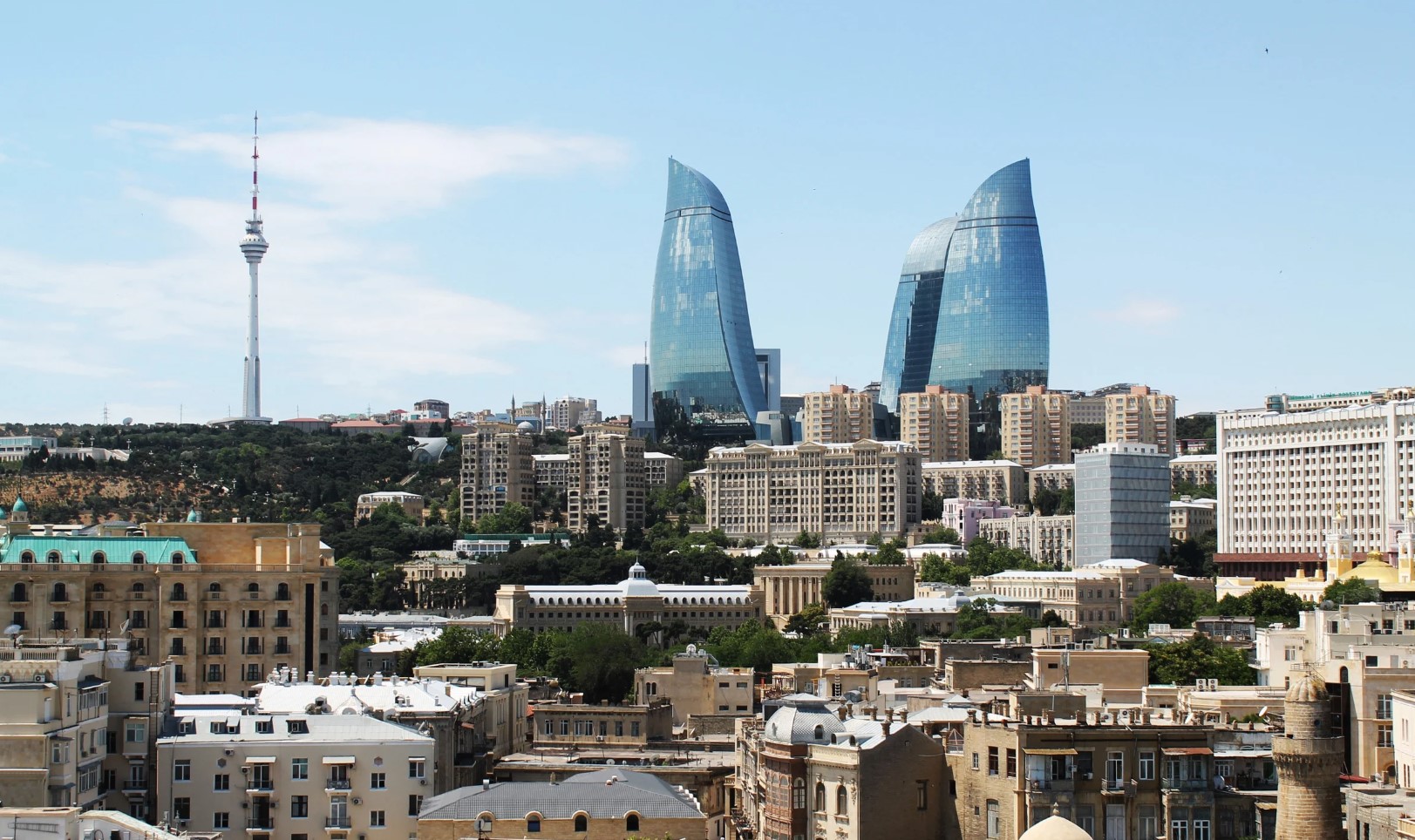
Unique Tourist Attractions İn Azerbaijan
Azerbaijan is rapidly gaining popularity as a travel destination in recent years for its unique blend of Eastern and Western cultures, natural beauty, and hospitality. Within the country, there are plenty of unique tourist attractions that would captivate the minds and hearts of tourists. Here is a list of some of the most interesting tourist attractions in Azerbaijan:
-
- Gobustan National Park
Gobustan National Park is a UNESCO World Heritage site that is located 60 km south of Baku, the capital city of Azerbaijan. This natural reserve is home to more than 6,000 rock carvings that date back to the Bronze Age. There are also mud volcanoes in Gobustan that are unique to Azerbaijan.
-
- Yanar Dag
Yanar Dag, also known as “Burning Mountain,” is situated about 25 km north of Baku. It is a natural gas fire that has been burning continuously for decades. The flames are visible for several kilometers at night, making it a popular spot for tourists.
-
- Mud Volcanoes
Azerbaijan has over 400 mud volcanoes, making it the world’s largest mud volcano province. These fascinating volcanoes are created by natural gas and oil bubbling up to the surface, causing explosions and leaving a residue of thick, gooey mud.
-
- Ganja City
Ganja City is the second-largest city in Azerbaijan, located in the west part of the country. It is known for its rich history, pleasant climate, and its impressive architecture, including the 17th century Juma Mosque and the old Ganja gate.
-
- Palace of the Shirvanshahs
The Palace of the Shirvanshahs is located in the old city of Baku and dates back to the 15th century. It was the home of the rulers of the Shirvanshah dynasty and is regarded as one of the finest examples of Persian architecture in the world.
-
- Heydar Aliyev Center
Designed by Iraqi-British architect Zaha Hadid, the Heydar Aliyev Center is a cultural center that opened in Baku in 2012. The building has an eye-catching, fluid design, and houses a museum, exhibition halls, conference facilities, and a library.
These are just a few of the many unique tourist attractions in Azerbaijan that offer visitors a glimpse into the country’s rich history, culture, and natural beauty. So, if you are planning your next trip, consider Azerbaijan to have a truly exhilarating experience.
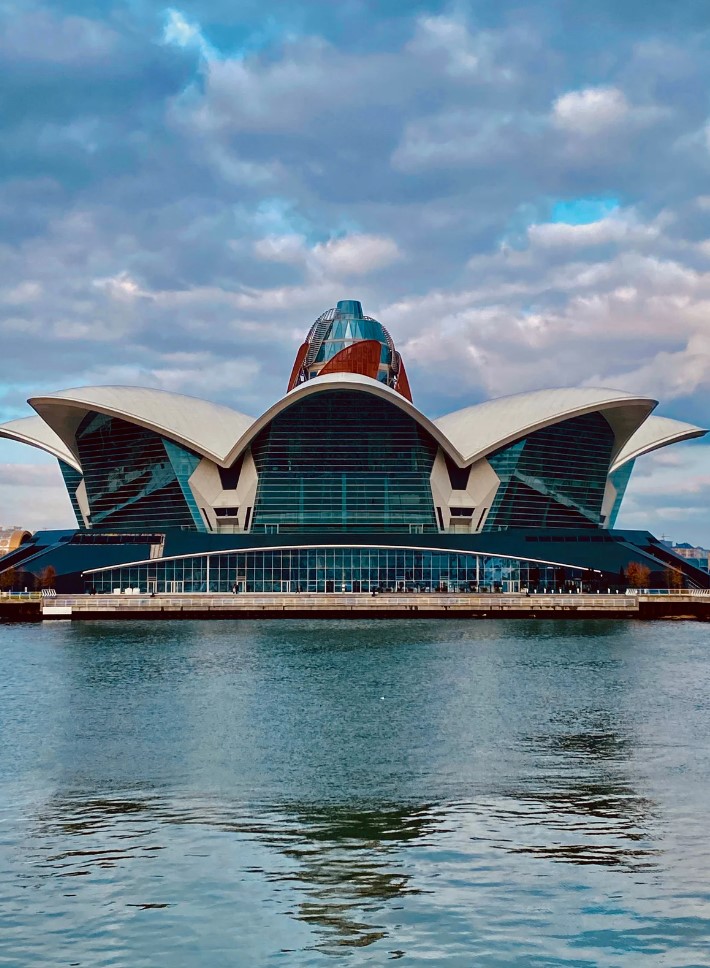
Baku: Azerbaijan’s Capital City
Baku, the capital city of Azerbaijan, is a perfect mix of tradition and modernity. A city with a rich history, medieval architecture and cultural landmarks, Baku has also become one of the fastest-growing urban centres in the world. Located on the western coast of the Caspian Sea, the city is the major port and commercial hub of Azerbaijan, making it one of the most important cities in the Caucasus region.
As you walk around the city, you will notice a striking blend of old town charm and modern skyscrapers. The city’s UNESCO-listed Old Town known as Icheri Sheher, translates to ‘Inner City’ in Azerbaijani language. Its winding streets are lined with ancient buildings, mosques, and caravanserais that have stood the test of time. The iconic Maiden Tower, which is one of the most recognizable landmarks of Baku, rises above the city’s skyline at almost 30 meters. At night, the illuminated tower provides a stunning sight for visitors.
But Baku is not just about ancient history and architecture. The city has undergone a major transformation in the last decade, and you will find impressive modern developments and architectural wonders. Baku’s cosmopolitan and modern skyline is anchored by the iconic Flame Towers, a trio of skyscrapers that shine like flames in the night sky. The Heydar Aliyev Center, a magnificent piece of contemporary architecture designed by the late Zaha Hadid, is also not to be missed when visiting Baku.
Baku is also home to some of the best restaurants and cafes in the region, serving Azerbaijani cuisine as well as international dishes. Make sure to try some of the traditional Azerbaijani dishes such as dolma, plov, and qutab, as well as the national delicacy – caviar. And, of course, tea is an essential part of Azerbaijan’s tea culture. Sample the fragrant, local brew in one of Baku’s tea houses, and enjoy the relaxed atmosphere that comes with it.
- Visit the Palace of the Shirvanshahs – an impressive medieval palace complex located in the heart of the Old City
- Take a stroll along the seaside promenade, known as the Boulevard, which stretches for 25 kilometers and offers a panoramic view of the Caspian Sea.
- Admire the modern architectural wonders of Baku such as the Flame Towers, the Heydar Aliyev Center, and the Baku Crystal Hall.
- Explore the world-renowned Baku-based museum, known as Museum of Contemporary Art, which houses a collection of modern and contemporary artworks.
Baku is a vibrant city that never ceases to amaze, and it has something to offer for everyone. Whether you are interested in history, culture, architecture, or just want to relax, Baku will not disappoint. It is a city that will capture your heart and make you want to return again and again.

Discovering Azerbaijani Cuisine
Azerbaijani cuisine is a unique and important part of Azerbaijan’s culture. Azerbaijani cuisine has been influenced by both Eastern and Western culinary traditions, resulting in a diverse blend of flavors and techniques. It is a fusion of Persian, Turkish, and Russian cuisines with a special twist of Azerbaijani character. Azerbaijani cuisine has many regional differences, but it is known for its use of herbs and spices, various meats, and dairy products.
Azerbaijan has a rich tradition of cooking meats over an open flame, and shashlik (kebab) is one of the most popular dishes in the country. Made from lamb, beef, or chicken, the meat is marinated in a blend of herbs and spices and then grilled to perfection. The skewers of meat are typically served with grilled vegetables, such as onions, bell peppers, and tomatoes.
Azerbaijani cuisine also features a variety of stews, or davğa. One of the most popular stews is piti, which is made from lamb or beef and vegetables, such as chickpeas, potatoes, and onions. The ingredients are slow-cooked in a clay pot, resulting in a rich and flavorful meal.
- The use of herbs and spices, such as saffron, sumac, and coriander, is essential in Azerbaijani cuisine. These ingredients not only enhance the flavor of the food, but also provide health benefits.
- Bread also holds an important place in Azerbaijani cuisine. One of the most popular breads is lavash, a thin, unleavened bread that is used to wrap meat, vegetables, and cheese.
- Dolma is another staple in Azerbaijani cuisine. It is a dish of stuffed vegetables, such as eggplants, peppers, and grape leaves, filled with a mixture of rice, meat, and herbs.
Azerbaijani cuisine is a delightful blend of flavors and traditions. From skewered meats to hearty stews, Azerbaijani food is truly unique and delicious. So, if you have the chance to visit Azerbaijan, be sure to discover the amazing taste of Azerbaijani cuisine.
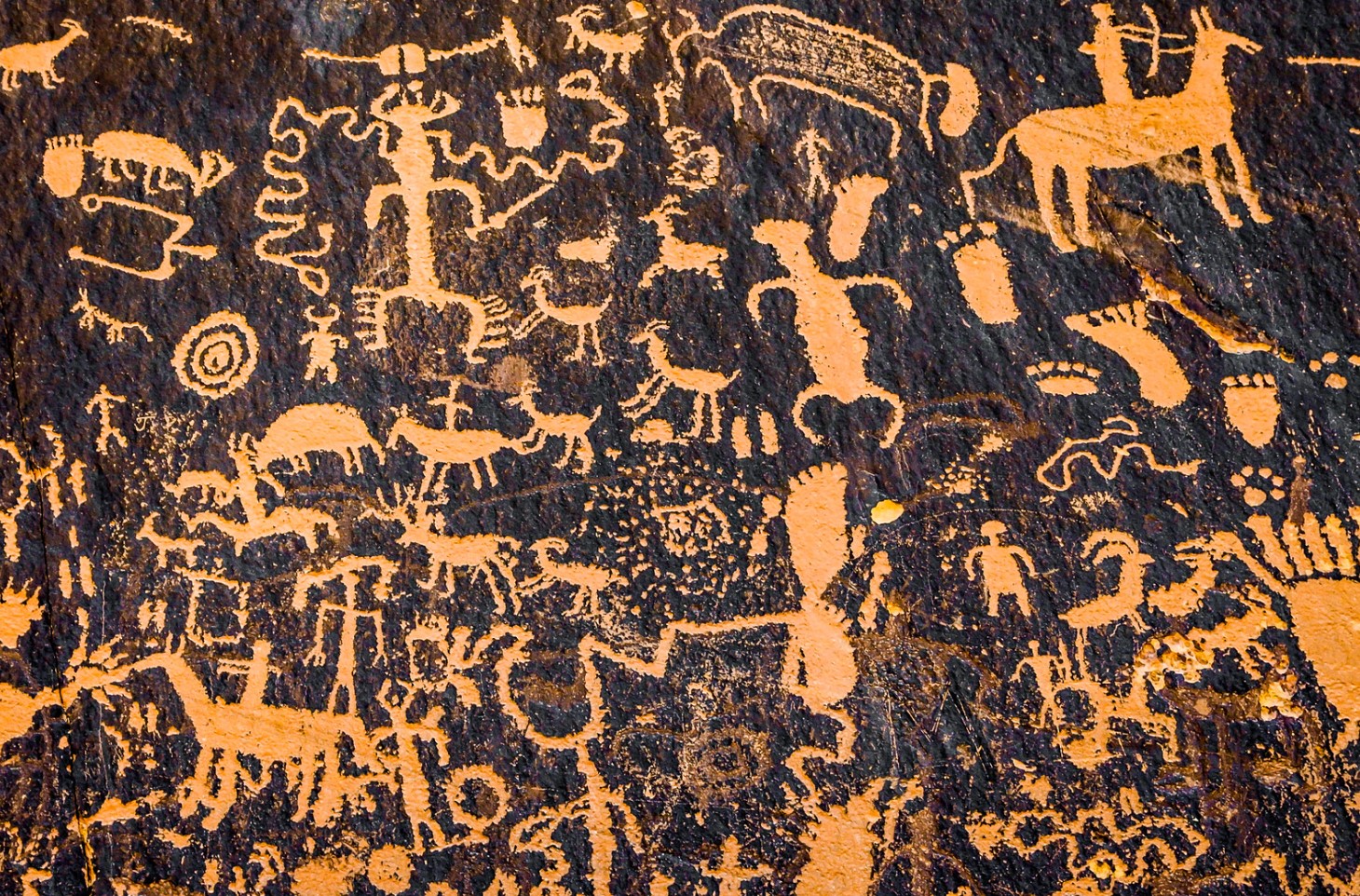
The Petroglyphs Of Gobustan
Gobustan is a captivating prehistoric site located about 64 km southwest of Baku, Azerbaijan’s capital city. It is home to over 6,000 ancient rock carvings, or petroglyphs, that date back to the Stone Age (up to 20,000 years old!). The petroglyphs feature different scenes of hunting, dancing, animals, and various abstract symbols that reflect ancient Azerbaijani culture.
- One of the notable features of the petroglyphs is that they represent one of the oldest evidence of human existence in the region.
- The petroglyphs have been recognised as a UNESCO World Heritage Site because of their historical and cultural significance, attracting thousands of tourists every year.
To fully appreciate the petroglyphs, a visit to the Gobustan National Park is necessary. Visitors can book a guided tour that highlights the history of the site, demonstrating the impact these prehistoric carvings had on Azerbaijani culture.
| Interesting facts about the petroglyphs in Gobustan: |
|---|
| The petroglyphs depict familiar animals, including oxen, deer, horses, goats, lions and tigers alongside fossilised bones of the same animals which indicates the presence of these animals during prehistoric times in this region. |
| In the vicinity of the petroglyphs, you can find other artefacts like stone sculptures and stone-flaking tools that were used by prehistoric inhabitants to make their art. |
Visiting the petroglyphs of Gobustan is a unique experience that offers an insight into the rich and long-standing history of Azerbaijan. It is an opportunity to learn about the earliest human civilizations in the region and admire the artistry and creativity of prehistoric Azerbaijanis.
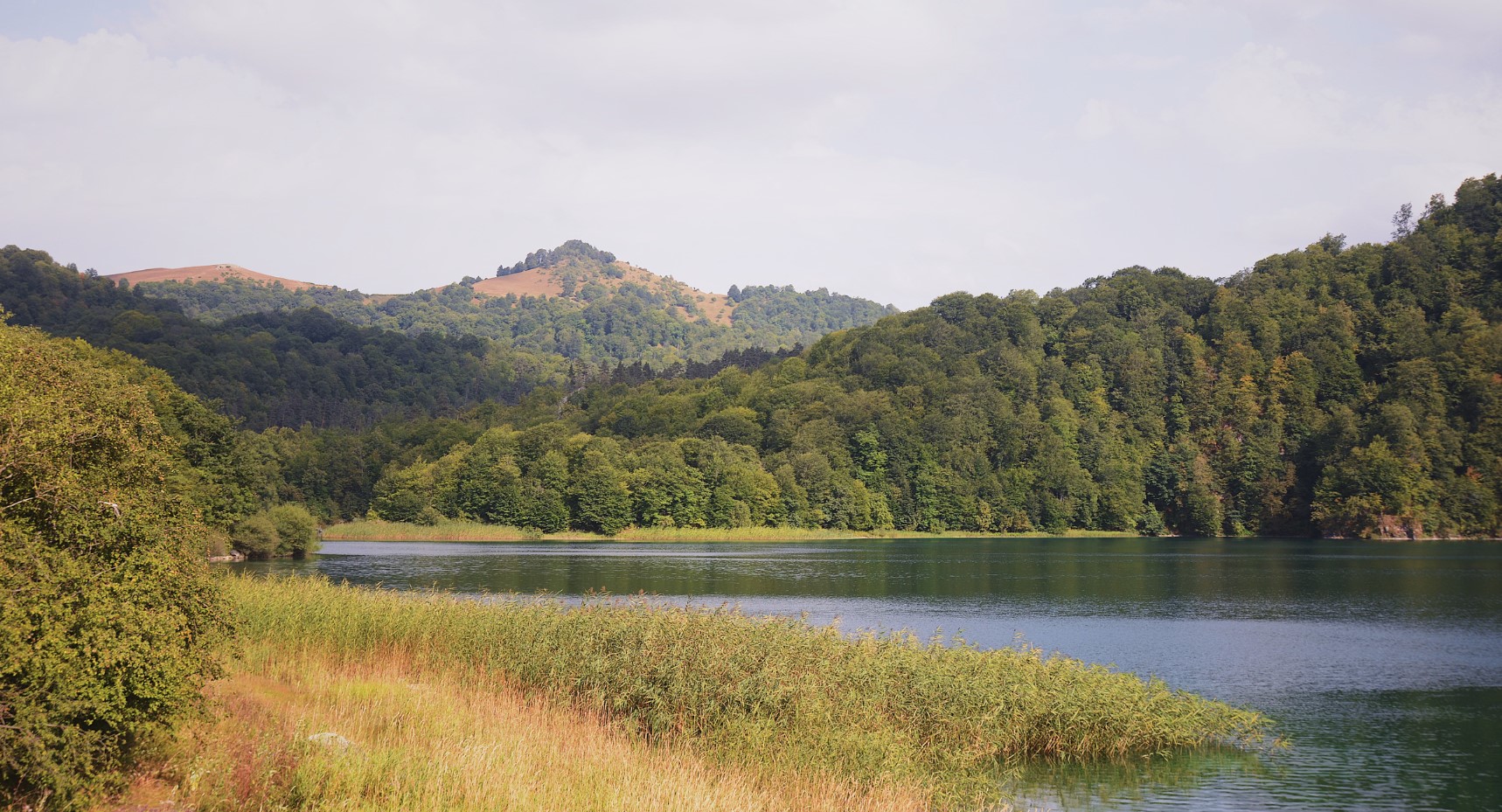
The Beauty Of Lake Goygol
Lake Goygol is one of the most beautiful natural sights in Azerbaijan, located in the foothills of the Caucasus Mountains. It is a stunning glacial lake, formed by an earthquake that occurred more than 1,000 years ago. The clear blue water of the lake is surrounded by forests full of colorful trees and lush vegetation. The scenery is so breathtaking that it will leave you wanting to stay forever.
The lake water is incredibly clear, which allows visitors to see the different kinds of fish that live in the lake. It is said that the lake’s waters have medicinal properties, which can cure various types of skin diseases. The lake is a perfect spot for fishing, boating, and swimming. You can rent boats or even go on a guided fishing tour. The surrounding forests offer perfect hiking trails, and you can find many picnic spots with amazing views of the lake.
The lake is also known as “the blue eye of Azerbaijan,” which makes sense as the water is a mesmerizing blue-green color. It is surrounded by the Murovdag range and the Lesser Caucasus Mountains, which enhance the lake’s beauty. It is not only a popular destination for tourists but also for locals who seek a peaceful escape from their busy city lives. The lake’s calm waters and serene atmosphere make it the perfect spot for those who want to relax and recharge.
- If you plan on visiting Lake Goygol, make sure to bring comfortable shoes for hiking and exploring the surrounding forest.
- There are many local guesthouses and hotels around the lake where you can stay overnight and experience the local culture and cuisine.
- Don’t forget your camera; the lake is one of the most photographable destinations in the country.
If you want to experience the beauty of nature and have an unforgettable vacation, Lake Goygol is the place to go. It’s a perfect destination for families, couples, and solo travelers who want to be surrounded by lush forests and crystal-clear waters. This place will leave you enchanted and will make you want to stay forever.
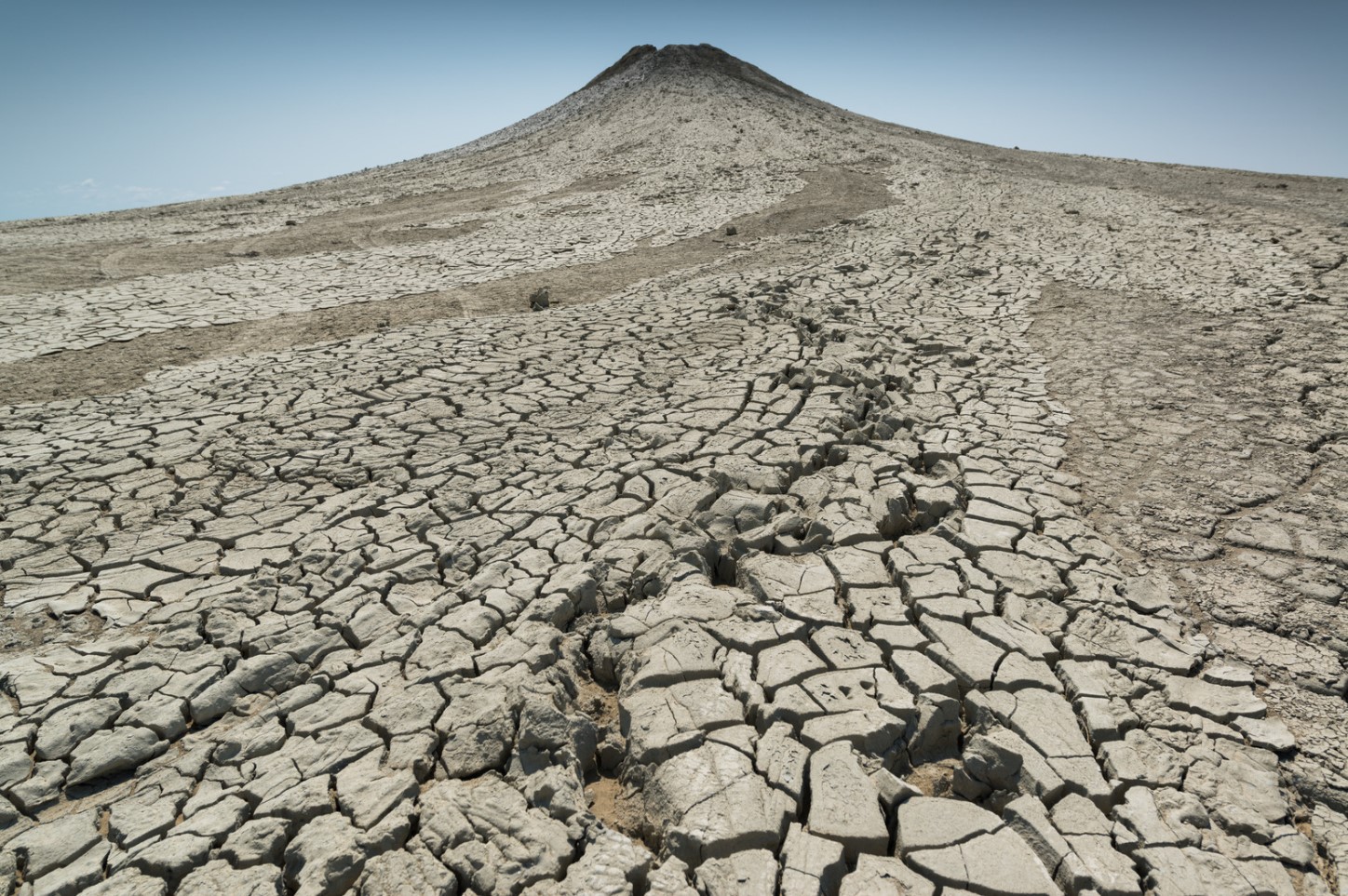
Qobustan Mud Volcanoes: A Natural Phenomena
Qobustan Mud Volcanoes: A Natural Phenomena
If you ever find yourself in Azerbaijan, you must visit the Qobustan Mud Volcanoes. This natural wonder is located about 60 kilometers from Baku and is a truly unique sight to witness. These small mountains of mud spew out mud and gas instead of lava like regular volcanoes, hence the name “mud volcanoes”. Azerbaijan is home to the majority of the world’s mud volcanoes with over 300 located within its borders.
- How are they formed?
The formation of mud volcanoes is still a mystery to geologists, but the theory is that they are formed when natural gas is trapped beneath the earth’s surface. When the pressure from the gas builds up, it finds a way to escape through the soft soil, carrying mud and minerals with it. This results in the mud volcanoes we see today.
| Location & Accessibility | Best time to visit |
|---|---|
| Qobustan mud volcanoes are located in Gobustan region, not far from Baku. You can visit them on a day trip from the capital city | The best time to visit is during the summer months when the weather is dry and warm |
Visitors are allowed to hike around and explore the mud volcanoes up close. The mud is cool to the touch and safe to walk on. Some of the mud volcanoes even have small craters that periodically erupt with a small explosion of mud and gas. It is recommended to wear sturdy shoes as the terrain can be slippery and uneven.
The Qobustan Mud Volcanoes are a geological marvel that should not be missed. The unique landscape and natural beauty of the area will leave you in awe. Make sure to add it to your list of “must-see” places in Azerbaijan.
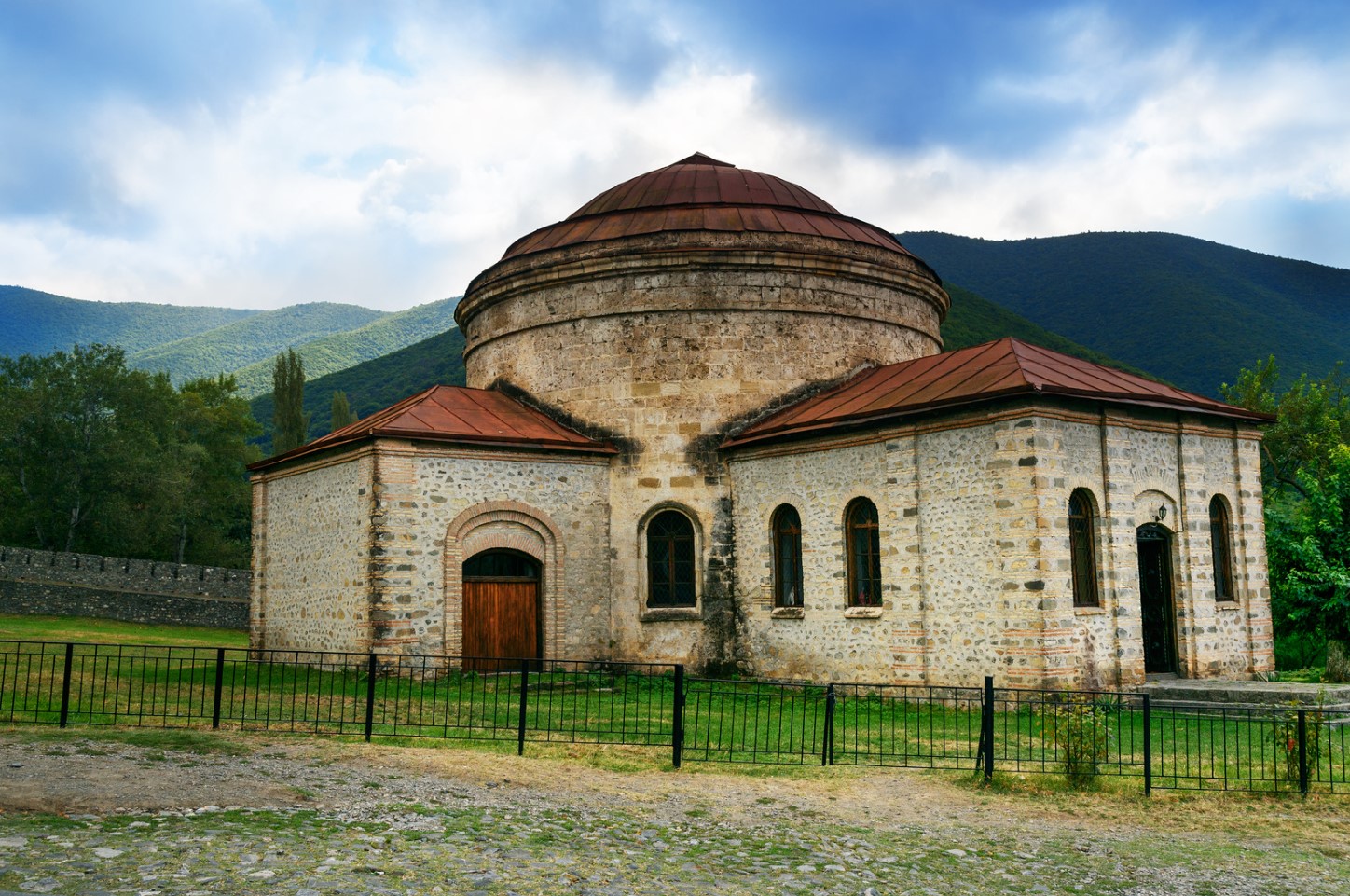
The Sheki Khan’s Palace And Its Rich History
Azerbaijan is a land of culture, history, and diverse traditions. One of the must-visit destinations in Azerbaijan is the Sheki Khan’s Palace, which is located in the city of Sheki, about 300 km away from the capital, Baku. The palace is a 18th-century masterpiece of architecture, design and art. It was built by the Sheki Khanate’s ruling family and is considered the pearl of the architecture of the Caucasus region.
The Sheki Khan’s Palace is a unique attraction in Azerbaijan that represents a blend of eastern and western architectural styles. The palace is surrounded by lush green gardens, where fountains and ponds add to the overall beauty of the place. The palace has two floors, with each floor being uniquely designed and decorated with intricate carvings, paintings, and stained glass. The walls, ceilings, and floors are adorned with floral and geometric patterns that reflect the artistic skills and creativity of Azerbaijani artisans.
Inside the palace, there are numerous rooms that were used for different purposes. Some of the rooms are designed as reception halls, others as bedrooms or living rooms, while some were used as baths or kitchens. Each room has its own distinctive design and decoration, which is a reflection of the social status of the person who used it. The palace is a testament to the wealth and affluence of the Sheki Khanate, which was known for its silk, honey, and trade in the Caucasus region.
- There are some must-sees when visiting the palace.
- The first one is the magnificent stained glass windows that let in the sunlight, making the palace shine like a diamond.
- The second one is the hammam, which is an ancient bath that was used for relaxation and socializing.
- The third attraction is the summer room, which is designed in such a way that the temperature inside is always cool, even during hot summer days.
Visiting the Sheki Khan’s Palace is an experience that will take you back to a bygone era. The palace is not only an architectural masterpiece but also a testimony to the history and culture of Azerbaijan. Azerbaijan is a country that has a rich cultural heritage and values it highly. It is a land of traditions, full of surprises that can make any traveler fall in love with it.
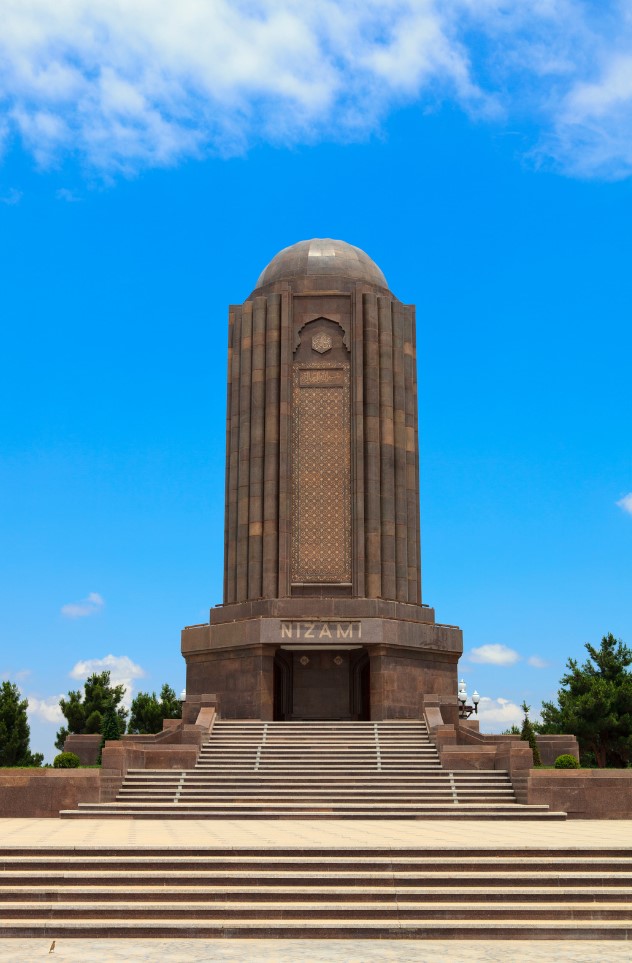
The Mausoleum Of Nizami Ganjavi
If you are interested in history, culture and literature, visiting the Mausoleum of Nizami Ganjavi in Azerbaijan is a must. This historical monument is located in the city of Ganja and is dedicated to Nizami Ganjavi, one of the most famous poets of the Persian literature.
The Mausoleum of Nizami Ganjavi is a remarkable example of Azerbaijani architecture. The building consists of a massive dome and two minarets that are decorated with intricate stone carvings and calligraphy. Inside the mausoleum, you can find the tomb of Nizami Ganjavi which is decorated with beautiful tiles and quotes from his most famous works.
- Interesting fact:
- Nizami Ganjavi is known for his work Leyli and Majnun, which is considered one of the greatest love stories in the Persian literature.
Visiting this historic site is not only a great opportunity to learn more about Azerbaijani culture and history, but it also offers a peaceful and inspiring atmosphere that is perfect for quiet contemplation.
| Address: | Nizami Street, Ganja, Azerbaijan |
|---|---|
| Working hours: | 9:00 AM – 5:00 PM |
| Entrance fee: | Free |
If you’re planning your trip to Azerbaijan, don’t miss the opportunity to visit this magnificent mausoleum that is not only a landmark of Azerbaijani architecture but also a tribute to one of the most cherished poets of the Persian literature.
The Old City Of Baku: A Historical Journey
The old city of Baku, known as Icherisheher, is a historical and architectural gem located in the heart of Azerbaijan’s capital city. Dating back to the 12th century, it has been listed as a UNESCO World Heritage Site since 2000. This walled city is home to numerous ancient buildings, including the famous Maiden Tower and the Palace of Shirvanshahs. Walking through the narrow streets and alleys, one can witness the blend of various architectural styles, reflecting the rich cultural history of the region.
Upon entering Icherisheher, visitors are greeted by the old city walls that once protected the city from invaders. The walls are made of limestone and bricks, and their height reaches up to 12 meters in some places. It’s a perfect place to start your journey through the old city. Visitors can take a leisurely walk along the walls, experiencing the stunning views of the Caspian Sea on one side and the old city on the other.
As visitors continue to explore, they come across the Maiden Tower, one of the most prominent landmarks in Baku. The tower is about 30 meters high and is believed to have been built during the 12th century. The interior of the tower consists of eight floors, each with its own purpose, including storage rooms and a mosque. While its original purpose remains a mystery, it’s thought that the tower may have been used as a watchtower or an astronomical observatory. Climbing to the top of the tower, visitors can enjoy the panoramic views of Baku and the Caspian Sea.
- Another must-see attraction in Icherisheher is
- the Palace of Shirvanshahs. Built in the 15th century,
- the palace served as the residence of the Shirvanshah dynasty rulers. The intricate stone carvings and exquisite mosaic patterns on the walls and ceilings of the palace are nothing short of breathtaking. In addition to the palace, the complex also includes a divankhana (court), a mosque, and other structures.
As visitors make their way through the winding streets, they’ll notice the many small shops and cafes selling everything from traditional Azerbaijani sweets to souvenirs. Exploring the old city of Baku is like stepping back in time to experience the rich history and culture of Azerbaijan’s capital, and it’s a must-visit destination for anyone traveling to the region.
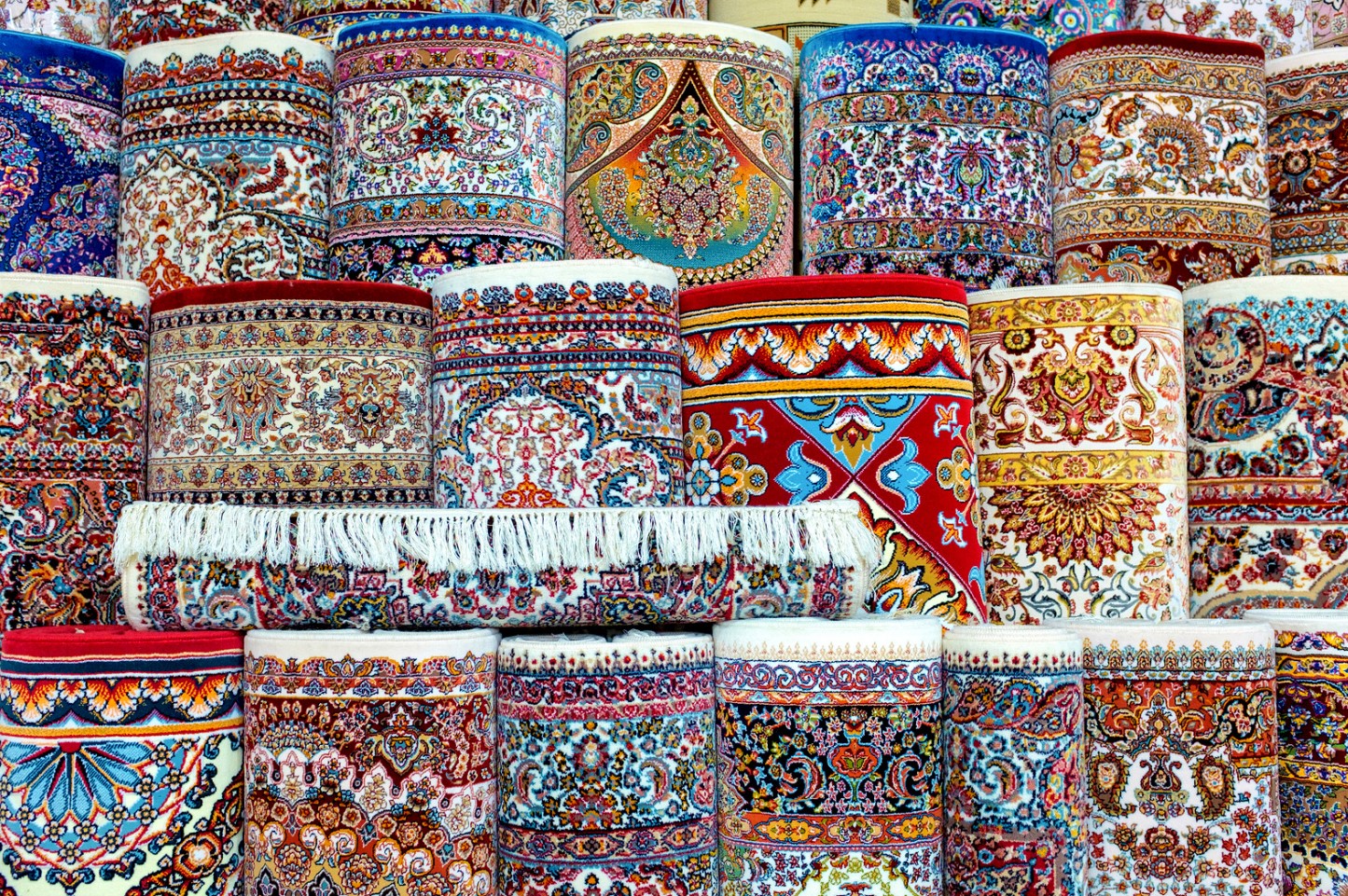
The Splendor Of Azerbaijan Carpet Weaving
Azerbaijan has a rich cultural heritage, and one of its most famous cultural exports is the tradition of carpet weaving. The country has long been known for its intricate and beautiful carpets, which are still an important part of Azerbaijani culture and daily life. The art of carpet weaving in Azerbaijan has a long history, dating back thousands of years to the Bronze Age. Today, Azerbaijani carpets are renowned throughout the world for their beauty, intricacy, and quality.
One of the most fascinating aspects of Azerbaijani carpet weaving is the wide variety of designs and motifs that are used. Each region of Azerbaijan has its own unique style of carpet weaving, and each style is characterized by different colors, patterns, and motifs. For example, carpets from the Karabakh region are known for their bright colors and bold geometric patterns, while those from Quba feature intricate floral designs. Some carpets are also woven with special designs that have symbolic meanings, such as the tree of life, which represents fertility and longevity.
- The process of carpet weaving
- The different types of carpets
- The cultural significance of carpet weaving in Azerbaijan
Another fascinating aspect of Azerbaijani carpet weaving is the process itself. Unlike many other countries, where carpets are made using machines, Azerbaijani carpets are still woven by hand, using traditional techniques that have been passed down from generation to generation. The process of weaving a carpet can take months or even years, depending on its size and complexity.
Finally, carpet weaving is an important part of Azerbaijani culture and identity. Carpets are not only beautiful works of art, but they also have practical uses, such as keeping homes warm and insulated during the cold winter months. In addition, carpets play an important role in many traditional Azerbaijani celebrations, such as weddings and other special occasions.
| Type of Carpet | Region | Design |
|---|---|---|
| Sheki | Sheki | Floral patterns in warm colors |
| Gabbeh | Lankaran | Simple geometric patterns in muted colors |
| Chichi | Nakhchivan | Geometric patterns in bold colors |
In conclusion, Azerbaijani carpet weaving is truly a remarkable art form that has been passed down through generations. The intricate patterns, unique designs, and high quality of Azerbaijani carpets have made them famous throughout the world, and they continue to be an important part of Azerbaijani culture and daily life.
An Exciting Tour Of Azerbaijan’s Wine Regions
Azerbaijan has a long history of wine production, dating back to at least 7000 BC. The country’s unique climate and geography provide ideal conditions for grape growing, particularly in the regions of Ganja, Tovuz, and Goygol. Today, Azerbaijan is home to several thriving wine regions that attract wine enthusiasts from around the world.
The wine regions of Azerbaijan offer visitors a chance to taste a variety of local wines, learn about the history and culture of winemaking in the country, and enjoy beautiful landscapes and traditional Azerbaijani hospitality. Some of the most popular wine regions to visit include:
- Ganja: This region is known for its dry red wines made from the Madrasa, Matrasa, and Rkasiteli grape varieties. Visitors can tour local wineries and vineyards and sample wines at tasting rooms.
- Tovuz: Located in the foothills of the Caucasus Mountains, this region produces dry whites and rich reds that are often compared to European wines. Visitors can explore historic winemaking sites and enjoy scenic views of the surrounding mountains.
- Goygol: Named after the nearby lake, this region is known for its sweet wines made from the Madrasa grape. Visitors can try traditional Azerbaijani wines and learn about the local winemaking culture.
Many wineries in Azerbaijan also offer guided tours that include tastings, vineyard walks, and information about the winemaking process. Some even offer accommodation for visitors who want to stay in the heart of the wine country. In addition, several wine festivals and events are held throughout the year, such as the Gabala Wine Festival and the Goygol Wine Festival.
Overall, an exciting tour of Azerbaijan’s wine regions offers visitors a chance to discover the rich history and culture of winemaking in the country, while enjoying delicious wines and beautiful scenery. Whether you are a wine enthusiast or simply looking for a unique travel experience, a tour of Azerbaijan’s wine regions is sure to be an unforgettable adventure.
Azerbaijan Through The Eyes Of A Photographer
Azerbaijan is a country rich in culture, history, and beauty. From its towering mountains to its stunning coastline, it’s no wonder why many photographers are drawn to this country. Photographers can spend hours capturing the unique architecture, natural landscapes, and vibrant culture of Azerbaijan. Even though many have traveled and photographed Azerbaijan, each photographer has their own unique perspective of the country. In this blog post, we will explore Azerbaijan through the eyes of a photographer.
One of the most stunning sites in Azerbaijan is the Caspian Sea. It is the largest inland body of water in the world, and its coastline provides numerous opportunities for photographers to capture the beauty of the sea. The combination of the sea along with the modern architecture of the surrounding cities is what makes it unique. Photographers can capture the contrast between the natural beauty of the sea and the contemporary buildings on the waterfront. The best time to photograph this is at sunset when the magical color palette covers the sky and its reflection is visible on the water.
The Old City of Baku is another must-visit location for photographers. Its narrow cobblestone streets, ancient architecture, and colorful buildings provide the perfect backdrop for photographing the city. One can spend hours capturing the essence of this old city as it has a rich history and has been preserved very well. The imaginative use of light and shadow, lines and shapes will make pictures appeal more artistic and professional. The city has a fortress called the Baku Walls which were built in the 12th century, and the Mardakan Fortress which was built in the 14th century. The intact fortresses and walls of Baku makes it a perfect spot for those who have a passion for history and architecture.
- The Gobustan Petroglyphs are also a unique location for photographers. These ancient petroglyphs have been carved into rocks and depict scenes from everyday life thousands of years ago. The site, which is a UNESCO World Heritage Site, provides a unique opportunity to capture the history of Azerbaijan through the art created by early humans.
- The Sheki Khan’s Palace is another must-visit location for photographers. It is located in the city of Sheki and was built in the 18th century. The palace is known for its beautiful stained-glass windows and intricate woodwork. The palace provides a stunning view for photography lovers as it offers dreamlike possibilities to enlighten their creativities.
Azerbaijan is a photographer’s paradise, and a trip to this country will provide endless opportunities to capture the beauty of the country. Its breath-taking landscapes, unique architecture, and rich history make it a must-visit destination for photographers from all over the world. The richness of the country can only be discovered through the lens of a camera, turning photography into a form of art to be explored and experienced.
Azerbaijani Hospitality And Customs
Azerbaijan is a country that prides itself on its hospitality and customs. Hospitality is an integral part of Azerbaijani culture and is deeply ingrained in its traditions. When guests visit Azerbaijan, they are greeted with open arms and treated with the utmost care and respect. This tradition of hospitality is deeply rooted in the history and culture of the Azerbaijani people, and it is a reflection of their generous and welcoming nature.
Azerbaijani hospitality is characterized by the warm welcome given to guests. From the moment a guest enters an Azerbaijani home or establishment, they are treated as honored guests. This tradition of hospitality is exemplified by the custom of serving tea, which is an important symbol of welcome and hospitality. As soon as a guest arrives, they are offered tea, which is typically sweetened and served in small glasses. This is a symbol of the host’s eagerness to welcome the guest and to make them feel at home.
Another important aspect of Azerbaijani hospitality is the custom of gift-giving. When visiting an Azerbaijani home or establishment, it is customary to bring a gift for the host. The gift need not be expensive, but it should be thoughtful and reflect the guest’s appreciation for the hospitality they are about to receive. This custom of gift-giving is an important symbol of respect and gratitude, and it is deeply appreciated by the Azerbaijani people.
- Tea is an important symbol of welcome and hospitality in Azerbaijani culture
- Gift-giving is an important custom that reflects respect and gratitude
Another important aspect of Azerbaijani hospitality is the tradition of sharing meals. Azerbaijani cuisine is famous for its rich flavors and variety, and sharing meals is an important expression of hospitality. When guests visit an Azerbaijani home or establishment, they are often treated to a lavish feast that includes a wide variety of dishes. This tradition of sharing meals is an important symbol of community and togetherness, and it is deeply cherished by the Azerbaijani people.
Finally, Azerbaijani hospitality is characterized by the deep respect given to guests. In Azerbaijani culture, it is considered a great honor to have a guest in one’s home, and the host will go to great lengths to ensure that the guest is comfortable and well-cared for. This deep respect for guests is a reflection of the values of the Azerbaijani people, and it is a testament to their generosity and kindness.
| Aspects of Azerbaijani Hospitality | Description |
|---|---|
| Tea | An important symbol of welcome and hospitality in Azerbaijani culture |
| Gift-giving | An important custom that reflects respect and gratitude |
| Sharing meals | An important expression of hospitality and community |
| Respect for guests | A reflection of the values of the Azerbaijani people |
In conclusion, Azerbaijani hospitality and customs are an integral part of the country’s culture and history. When visiting Azerbaijan, guests can expect to be treated with the utmost care and respect, and they will be welcomed into the homes and establishments of the Azerbaijani people. The traditions of tea, gift-giving, sharing meals, and deep respect for guests are all important expressions of Azerbaijani hospitality, and they reflect the generous and welcoming nature of the Azerbaijani people.